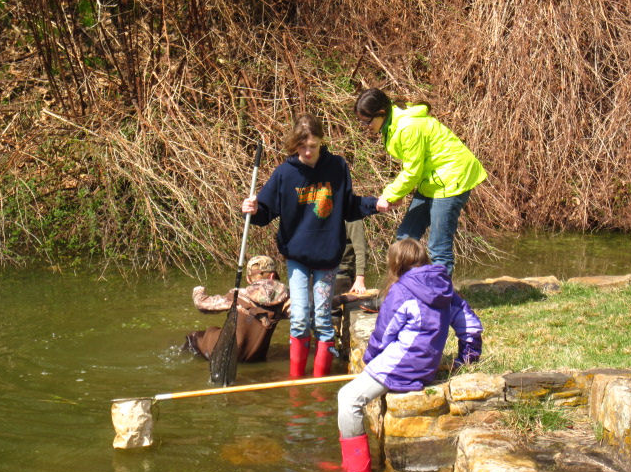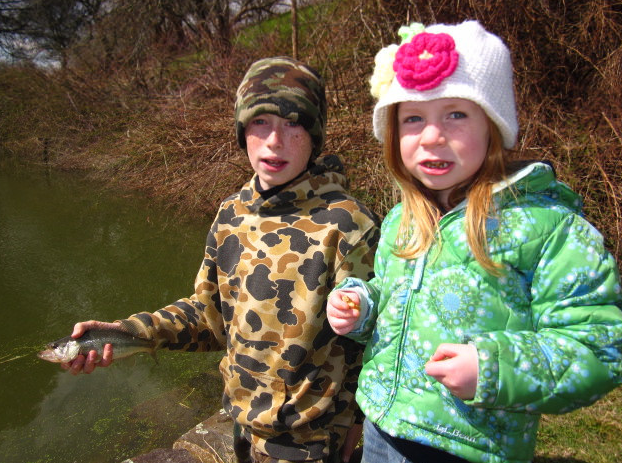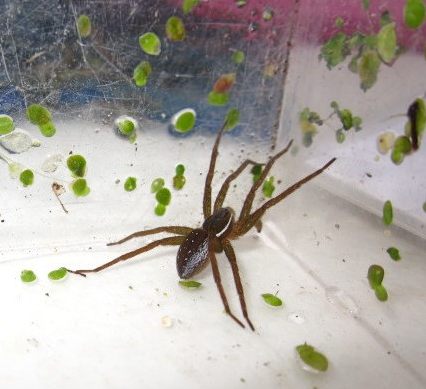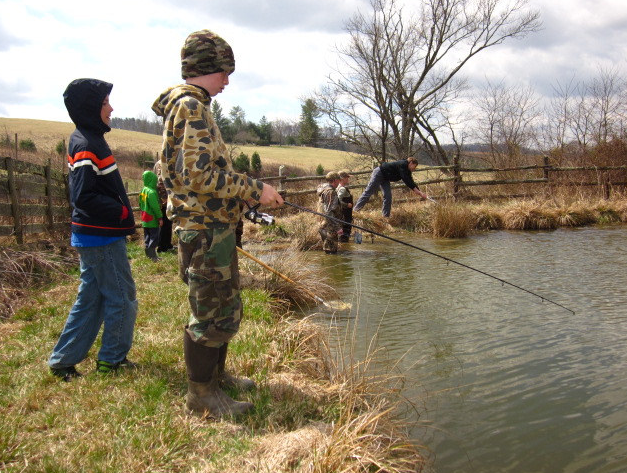Bio Survey, Matthew's State Forest, March 30th, 2015
At long last, the Southwest Virginia Home Educators returned for another fun-filled day of exploration and discovery at the Matthews State Forest. Twelve children of a wide age range and four moms joined Evan Worrell and me (Scott Jackson-Ricketts), BRDC guides, for a five hour plot investigation. We dedicated the morning to bird identification realizing quite a data set once the sun came out. Among the species we were able to list were:
Wood ducks (only Scott saw those)
Red-winged blackbird
American crow
Blue jay
Common raven
European starling
Eastern meadowlark
Brown thrasher
Winter wren
Song sparrow
Northern mockingbird
Northern cardinal
Tree swallow
American robin
Eastern bluebird
Black vulture
Field sparrow
Mourning dove
Eastern phoebe
BRDC provided binoculars and field guides to give our young students a chance to ID birds on their own. I set up the spotting scope to offer everyone a chance to see some of the more cooperative birds close up, such as the meadowlark and thrasher. Spring bird song filled the air, which gave us another opportunity to learn how to identify the different birds.
After lunch we switched gears and focused on pond life. Two boys fished in the tradition of catch and release, coming up with two large-mouthed bass. One team worked the spring head while team #2 spent their time at the muddy drainage end of the pond. We worked diligently on identifying what critters and plants we could, mostly through microscopes.
There was an obvious abundance of caddis-fly larvae, which utterly captured the kids’ fascination. Watching under the microscopes, each student studied the ‘tube-worms’ and their amazing self-fashioned housing or tubes. Caddis-flies use whatever materials are at hand, so in a pond, their tubes are constructed of plant material, rather than the pebbles one finds in a stream. At the spring head, where there was an abundance of duck weed, each caddis had decorated their homes with this material, in effect camouflaging themselves quite properly. At the muddy end, there was no duck weed, so these caddis’ homes were built of mud and small sticks, and were brown as the mud.






Other water dwelling discoveries included damselfly larvae, giant waterbugs (one snacking on a caddisfly), orb snails, bull frog tadpoles, a predacious diving beetle, water striders, a wolf spider and water fleas. All of these small animals were identified using various charts and field guides, with the older kids reading out loud some of their life histories.
Towards the end of our survey, Evan took a few kids and moms on a tree identification walk. Judge Matthews, who gifted this land to the state forest, was particularly interested in trees. We were investigating behind what was once his farm house. On two sides there is an apple orchard with a vast diversity of varieties, many with labels. An abiding interest of his was the American chestnut, to which a significant part of this state forest is dedicated, eventually returning the chestnut to our Eastern forests through a series of back-crossing with the Chinese chestnut. We will go into that in more detail later. So it comes as no surprise to anyone that there is a diversity of trees around the old farm house…including buckeye.
Winding up our day’s work, it was agreed by the moms and our guides that these kids need as much of this type of learning experience as time will allow. To that end, we agreed to continue with a marsh study in two weeks, and continue on through the spring and summer.
Good science, good fun, and feeding curiosity remain on tap.
Scott Jackson-Ricketts